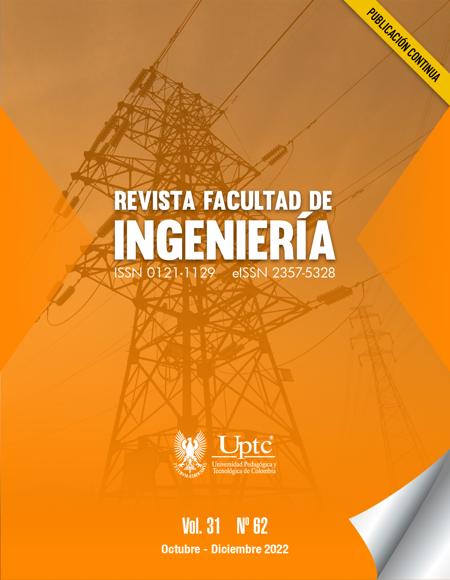Co-creación Fallida: El caso del proyecto BCNStreet-Lab

Resumen
Se presentan los resultados del proyecto BCNStreet-lab, un proceso de cocreación de un prototipo que “murió antes de existir” y que llevo a reflexionar sobre el poder creativo que puede tener el diseño participativo entre expertos. Observando la alta variabilidad que adquirió el diseño con las sesiones de cocreación, se denota cómo un proceso abierto puede generar desbordamientos en el diseño, que hacen posible la innovación pero también pueden llevar al fracaso, como en este caso, debido a lo arriesgado que puede ser el diseño participativo de “tecnologías fluidas” y lo ineficaz que puede ser tratar de reproducir el modelo de innovación de cuádruple hélice en pequeños proyectos. Se intenta dar cuenta de la fructífera relación entre la cocreación y el diseño de tecnologías electrónicas, la cual se da en el “lobby” del diseño técnico del prototipo, genera negociaciones e interacciones y permite avanzar en la democratización de las prácticas de diseño en ingeniería electrónica, computación y telecomunicaciones. En este punto, la cocreación se concibe como un espacio en el que las prácticas institucionales, las necesidades sociales, los imaginarios tecnológicos, los intereses económicos, los intereses tecnocientíficos, etc. son reunidas, se traduce e inscriben en el diseño de las tecnologías.
Palabras clave
Co-creación, Ingeniería, sobre tecnificación, variabilidad sociomaterial, tecnologías fluidas
Citas
- A. Barry, “Technological Zones,” European Journal of Social Theory, vol. 9, no. 2, pp. 239–253, 2006. https://doi.org/10.1177/1368431006063343 DOI: https://doi.org/10.1177/1368431006063343
- M. Callon, “Some Elements of a Sociology of Translation: Domestication of the Scallops and the Fishermen of St Brieuc Bay,” The Sociological Review, vol. 32, no. 1, pp. 196–233, 1984. https://doi.org/10.1111/j.1467-954X.1984.tb00113.x DOI: https://doi.org/10.1111/j.1467-954X.1984.tb00113.x
- M. Callon, P. Lascoumes, Y. Barthe, Acting in An Uncertain World: An Essay on Technical Democracy (Inside Technology). Cambridge: MIT Press. Eds.2009
- E. Carayannis, D. Campbell, "Triple Helix, Quadruple Helix and Quintuple Helix and How Do Knowledge, Innovation and the Environment Relate To Each Other?: A Proposed Framework for a Trans-disciplinary Analysis of Sustainable Development and Social Ecology," International Journal of Social Ecology and Sustainable Development, vol. 1, no. 1, e05, 2010. https://doi.org/10.4018/jsesd.2010010105 DOI: https://doi.org/10.4018/jsesd.2010010105
- E. Carayannis, D. Campbell, “Mode 3'and'Quadruple Helix': toward a 21st century fractal innovation ecosystem,” International journal of technology management, vol. 46, no. 3-4, pp. 201-234, 2009. https://doi.org/10.1504/IJTM.2009.023374 DOI: https://doi.org/10.1504/IJTM.2009.023374
- I. Farías, “Devising hybrid forums: Technical democracy in a dangerous world,” City, vol. 20, no. 49, pp. 549-562, 2016. https://doi.org/10.1080/13604813.2016.1193998 DOI: https://doi.org/10.1080/13604813.2016.1193998
- M. Haldrup, M. Hobye, N. Padfield, “The bizarre bazaar: FabLabs as hybrid hubs,” CoDesign, vol. 14 no. 4, pp. 329-344, 2018. https://doi.org/10.1080/15710882.2017.1378684 DOI: https://doi.org/10.1080/15710882.2017.1378684
- K. Henderson, “Flexible Sketches and Inflexible Data Bases: Visual Communication, Conscription Devices, and Boundary Objects in Design Engineering,” Science, Technology, & Human Values, vol. 16, no. 4, pp. 448–473, 1991. https://doi.org/10.1177/016224399101600402 DOI: https://doi.org/10.1177/016224399101600402
- T. Ingold, Bringing things back to life: Creative entanglements in a world of materials, Master Thesis, University of Manchester, 2010. http://eprints.ncrm.ac.uk/1306/
- A. Jiménez, “The Right to Infrastructure: A Prototype for Open-Source Urbanism,” Environment and Planning D: Society and Space, vol. 32 no. 2, pp. 342–362, 2014. https://doi.org/10.1068/d13077p DOI: https://doi.org/10.1068/d13077p
- H. Kärvi, A. Kähkönen, H. Torvinen, “When value co-creation fails: Reasons that lead to value co-destruction,” Scandinavian Journal of Management, vol. 34, no. 1, pp. 63-77, 2018. https://doi.org/10.1016/j.scaman.2018.01.002 DOI: https://doi.org/10.1016/j.scaman.2018.01.002
- M. Laet, M. Annemarie “The Zimbabwe Bush Pump: Mechanics of a Fluid Technology,” Social Studies of Science, vol. 30, no. 2, pp. 225–263, 2002. https://doi.org/10.1177/030631200030002002 DOI: https://doi.org/10.1177/030631200030002002
- K. Laursen, A. Salter, “Searching high and low: what types of firms use universities as a source of innovation?," Research policy, vol. 33, no. 8, pp. 1201-1215, 2004. https://doi.org/10.1016/j.respol.2004.07.004 DOI: https://doi.org/10.1016/j.respol.2004.07.004
- B. Latour, C. Porter, Aramis, or, The love of technology. Cambridge, MA: Harvard University Press. 1996.
- B. Latour, Pandora's hope: essays on the reality of science studies. Cambridge: Harvard University Press, 1999
- J. Law, M. Mol. “An introduction,” in Complexities: Social Studies of Knowledge Practice, Law and Mol.Durham: Duke University Press, 2002 DOI: https://doi.org/10.2307/j.ctv113144n
- T. Lodato, C. DiSalvo, “Institutional constraints: the forms and limits of participatory design in the public realm,” in Proceedings of the 15th Participatory Design Conference, 2018, pp. 1-12. https://doi.org/10.1145/3210586.3210595 DOI: https://doi.org/10.1145/3210586.3210595
- E. Manzini, F. Rizo, “Small projects/large changes: Participatory design as an open participated process,” CoDesign, vol. 7, no. 3-4, pp. 199-215, 2010. https://doi.org/10.1080/15710882.2011.630472 DOI: https://doi.org/10.1080/15710882.2011.630472
- N. Marres, “Participation as if Things Mattered,” in Material participation: Technology, the environment and everyday publics. London: Palgrave Macmillan, 2015 DOI: https://doi.org/10.1007/978-1-137-48074-3_1
- K. Mitzner, Complete PCB design using OrCAD Capture and PCB. London: Newnes, 2009.
- E. Ostrom, “Governing the Commons: The Evolution of Institutions for Collective Action,” Natural Resources Journal, vol. 32, no. 2, pp. 416-417, 1992.
- A. Phillips, “List,” in Inventive Methods, London: Routledge, 2012.
- S. Pfotenhauer, S. Jasanoff, “Panacea or diagnosis? Imaginaries of innovation and the ‘MIT model’in three political cultures,” Social Studies of Science, vol. 47, no. 6, pp. 783-810, 2017. https://doi.org/10.1177/0306312717706110 DOI: https://doi.org/10.1177/0306312717706110
- S. Star, "Infrastructure and ethnographic practice: Working on the fringes," Scandinavian Journal of Information Systems, vol. 14, no. 2, e06, 2002
- J. Sydow, G. Müller-Seitz, “Open innovation at the interorganizational network level–Stretching practices to face technological discontinuities in the semiconductor industry,” Technological Forecasting and Social Change, vol. 155, e036, 2020. https://doi.org/10.1016/j.techfore.2018.07.036 DOI: https://doi.org/10.1016/j.techfore.2018.07.036